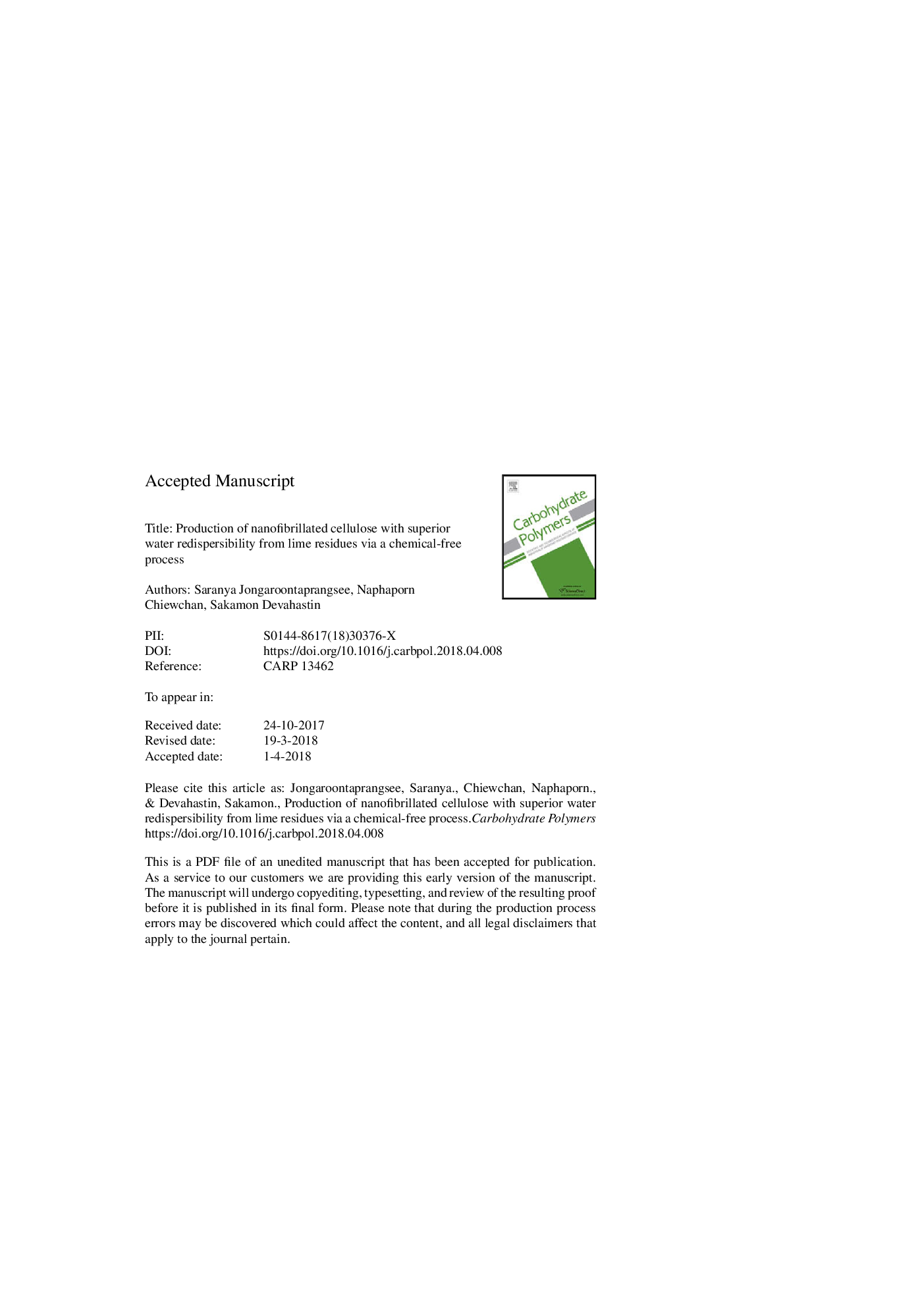| Article ID | Journal | Published Year | Pages | File Type |
|---|---|---|---|---|
| 7782592 | Carbohydrate Polymers | 2018 | 33 Pages |
Abstract
Water removal during drying of nanofibrillated cellulose (NFC) generally results in the formation of hydrogen bonds between fibers, leading to irreversible fiber agglomeration and hence their poor water redispersibility. The feasibility of using lime residues after juice extraction to produce dried NFC possessing superior redispersibility was here investigated. After autoclaving at 110-130â¯Â°C for 2â¯h, high-shear homogenization at 3800â¯Ãâ¯g for 15â¯min and high-pressure homogenization at 40â¯MPa for 5 passes, NFC having the diameters of 5-28â¯nm and crystallinity index of 44-46% could be obtained. After hot air drying at 60â¯Â°C, dried NFC could be well dispersed in water, with viscoelastic property similar to that of the originally prepared NFC suspension. Pectin associated with cellulose nanofibrils helped prevent fiber aggregation during drying and hence facilitating nanofiber redispersion in water. This observed trend was opposite to that belonging to fiber undergone chemical treatments to remove non-cellulosic constituents.
Related Topics
Physical Sciences and Engineering
Chemistry
Organic Chemistry
Authors
Saranya Jongaroontaprangsee, Naphaporn Chiewchan, Sakamon Devahastin,
